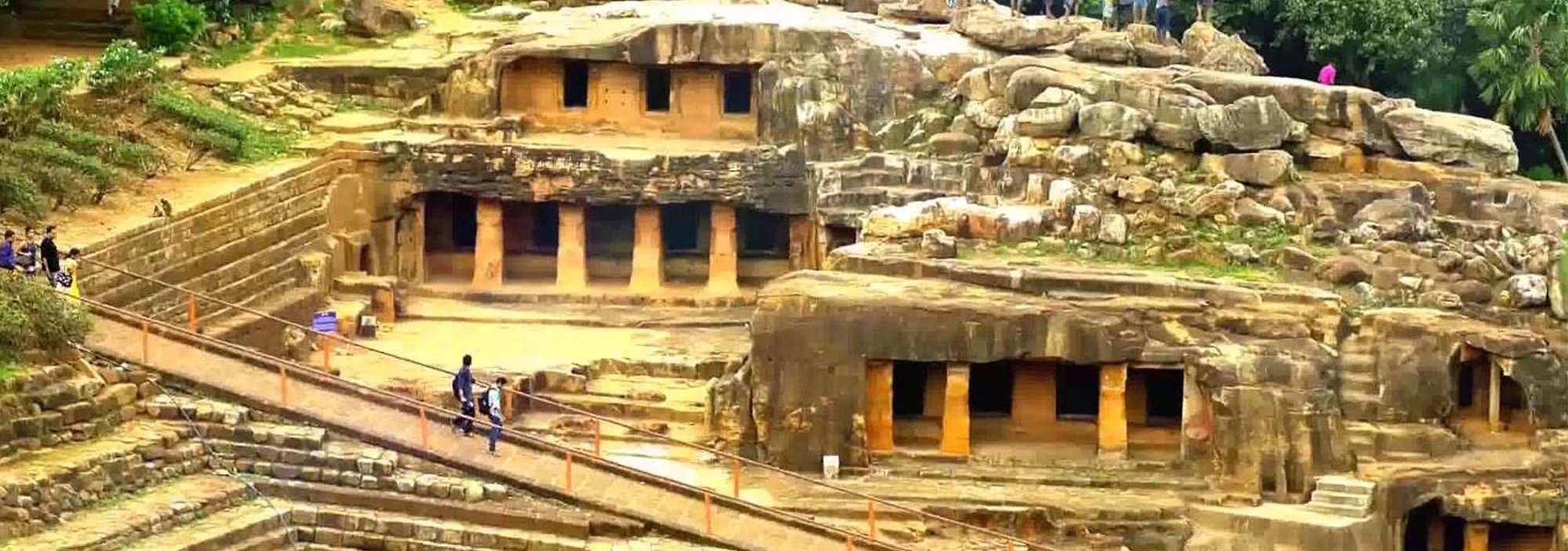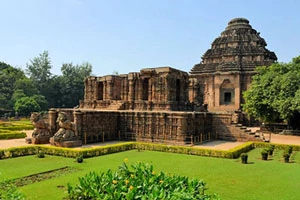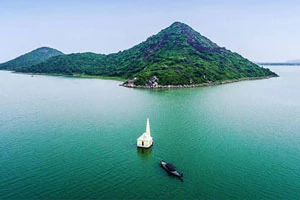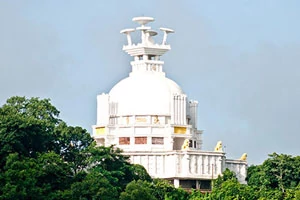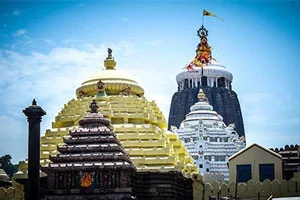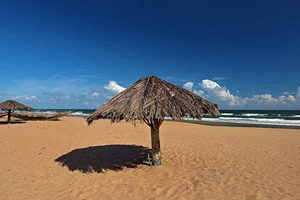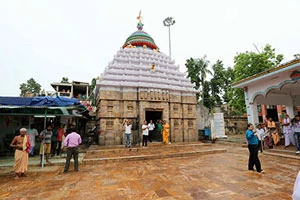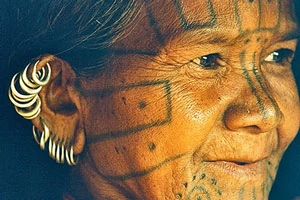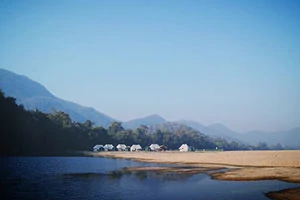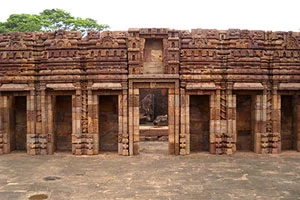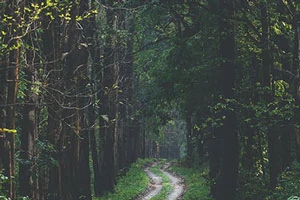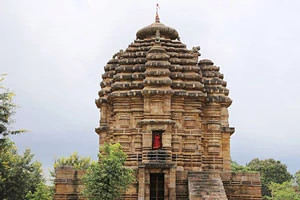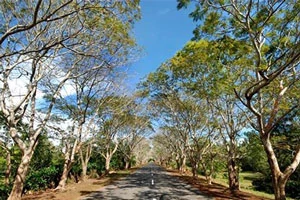PLACES TO VISIT IN BHUBANESWAR



The capital city of India’s eastern state of Odisha is called as the ‘City of Temples’ as it houses hundreds of temples. Temples built from sandstone are dotted around Bindu Sagar Lake in the old city, the 11th-century Hindu Lingaraja Temple, Rajarani Temple, Khandagiri caves, Jain antiques, pattachitra paintings in Odisha State Museum, Nandankanan Zoological Park, King Ashoka’s rock-cut edicts at Dhauli Hills were reputedly engraved by Ashoka and Chandaka-Dampara Wildlife Sanctuary are ultimate destination for tourists to revel in.
Lingaraj Temple: If you have an aching for religious worship, then you cannot miss, Lingaraj temple in Bhubaneswar. Dedicated to Shiva and is one of the oldest shrines in the country, Lingaraj temple also 150 subsidiary temples, many of them extremely interesting in their own right. Called as 'time quintessence of Odishan architecture’, this shrine records a footfall of an average of 6,000 visitors per day and receives lakhs of visitors during festivals. A total of 22 worship services are offered to the Lord Lingaraj, the presiding deity each day. As per Hindu legend, an underground river originating from the Lingaraj temple fills the Bindusagar Tank and the water is believed to heal physical and spiritual illness. Candan Yatra, chariot festivals are some of the most famous religious occasions. Lingaraj abodes to a rare type of Linga called ‘Svayambhu linga’. Situated on the heartland of the capital city it is just few minutes of drive away from Biju Patnaik International Airport in Bhubaneswar and railway station. Some other important tourist destinations nearby Lingaraj are Rameswar Temple Parsurameswar Temple Kedargauri Temple Brahmeshwara Temple Ram Mandir, Bhubaneswar Kapilesvara Temple ISKCON Temple Meghesvar Temple.
Rajarani Temple: It is another fantastic destination to visit in the city of temples, Bhubaneswar due to its illustrious temple architecture and its vicinity to other important temples in the older parts of the city one can feel the age old entities bearing testimony to the proud Odishan culture and history. Believed to have been known originally as Indreswara, Rajarani temple is also locally known as a "love temple" because of the erotic carvings of women and couples. Various historians place the original construction date between the 11th and 12th centuries, and have placed it roughly belonging to the same period as the Jagannath Temple at Puri. The Department of Tourism of the Government of Odisha organises a Rajarani music festival at the temple every year from January 18 to 20.
Mukteswar Temple: Experts say, this temple is the finest piece of architecture in present day Odisha and tells a lot about the magnificence architecture in the bygone era. Famously known for its folklore and legend has it that a dip in the tank present in the eastern side of the temple also known as Marichi Kundacan cure infertility in women. The temple is dedicated to Hindu god Shiva. According to tradition, barren women give birth to sons if they take a dip in the Marichi Kunda tank in the premises of the temple on the night before Ashokashtami car festival. On the evening, the water in the tank is sold to the public…
Hirapur Chausathi (64) Yogini Temple: Also known as 64 Joginis Temple, it is believed to be founded by the Queen Hiradevi during the 9th century belonging to Brahma dynasty. Built in a circular structure, it is made up entirely of sandstone.
Brahmeswar Temple: This Hindu temple is dedicated to Lord Shiva and is richly and intricately carved in and out. It belongs to the late 11th century and is made in the form of panchatanaya where along with the main shrine; four subsidiary shrines are around the temple complex.
Parshurameswar Temple: Famous among as one of the oldest and best preserved temples belonging to an early Odia Hindu temple, it is dedicated to Lord Shiva. The temple has a vimana, a bada, a sanctum and the spire over the roof that is about 40.25 ft tall in height.
Nandankanan Zoological Park: Away from the bustle of city, one can experience pure joy, see the panoramic views of nature and appreciate the glamour that exists in the external morphology of plants and animals at Nandankanan Zoological Park. Situated at around 16 km from the capital city and well connected by buses, public transport on roads it is also a half-an-hour drive away from the airport and train connectivity. One would be definitely impressed by the nature's symphony and impressed by the exquisite touch of the wilderness here with the zoo boasting nearly 3000 animals including more than 1500 winged creatures, 260 odd reptiles, dozens of which are exoctic nature. Some of the rarest species are also up for sightseeing here. Being the first zoo in the country to become a member of World Association of Zoos & Aquariums, it is also the 1st White tiger safari in India. It has largest enclosures for housing Gharials and Hippoptamus and has successgfully some of the endangered animals in breeding so one can also see them. If you want more excitement, then straight book for a drive into a getaway with lions and elephants in safari and if you want to feel a bit more then you sure have toy train facility, battery operated vehicles, ropeway facilities which are soon going to be installed. What is more exciting is that you can help involve the general public in animal conservation and raise money and can straight adopt an animal.
Dhauli Buddhist Heritage: This international heritage monument, famously known as the ‘Peace Pagoda’, or ‘Dhauli Shanti Stupa’, spreads and celebrates the message of peace. The battle of Kalinga was fought here and it is situated about 8 km south on the outskirts of the city, Bhubaneswar.
Khandagiri & Udaygiri Cave: It is another site of top archaeological, historical and religious importance in Bhubaneswar. Dating back to 2nd century BC these two ancient cave sites are a must see for everyoneIt is believed that these caves used to serve as temporary monasteries for ancient Jain monks during the reign of King Kharavela if you have that love for the old then this is like a warehouse of ancient data, scriptures, information of all sorts from culture, lifestyle, religion, faith to the legendary rulers who patronized for those who carved out inscriptions on rocks. Situated on two hills, these two sites are adajacent to each other. One can get a panoramic view of the city from above these hills and you would be mesmerized to feel the power of these sites when you stand atop. Udayagiri means "Sunrise Hill" and has 18 caves while Khandagiri has 15 caves. These sites had dozens of more caves earlier. Rani Gumpha "Cave of the Queen" is the largest and most popular cave among the caves of Udayagiri and Khandagiri. Some other types of caves found here are Bajaghara Gumpha, Hathi Gumpha, Vyaghra Gumpha, Ganesha Gumpha, Dhyana gumpha, Trusula gumpha. Various rock edicts and inscriptions in Brahmi script, Devanagari script adorn the rocks here.
Odisha State Museum: Dating back to British era during 1930s, this is definitely a landmark to visit and is the considered as a legacy of Odisha history’s best kept secret. Being the biggest historical museum in the state, it homes to a number of ancient relics of immense value. The museums contain rich collection of pre-historic sculptures, rare manuscripts written on palm leaves, terracotta, numismatics, stone inscriptions, age-old coins and other artifacts including traditional musical instruments, contemporary art, bronze, stone and copper materials ranging from 3rd century B.C. to 20th century A.D. that offer an insight into the lifestyle of the ancient rulers and vivid bygone era of the city. So one would definitely make it a must see for Bhubaneswar tour. The museum remains open to all from 10:00 AM to 5:00 PM all days of the week except Monday. It has a total of 11 sections including Archaeology, Contemporary art, Epigraphy, Numismatics, Arms and ammunitions, Art and craft, Mining & Geology, Anthropology, Sanskrit manuscript, Patta painting.
Museum of Tribal Arts & Artefacts: Essentially set up by the tribal craftsmen to provide information about the rich Odisha tribal heritage, Odisha Tribal Museum has been recognized by the UNESCO as one of the best maintained tribal museums in India. The museum displays the clothing, wooden, metal, stone objects and jewelry items of several tribes of the state Bonda, Lanjia Saora and Santhal tribes. There is also a library and small zoo in the museum that enthrall the visitors, particularly the students.
Kala Bhoomi - Odisha Craft Museum: Famously been well known as Kala bhoomi, Odisha Craft Museum in Bhubaneswar is dedicated to art and crafts of Odisha. Inaugurated by the CM of Odisha in 2018, the museum is vast spread in a large area of 12.68 acre land, sectioned further into an open air amphitheatre, 8 galleries, a souvenir shop and a workshop area. Celebrating the craftsmanship and zeal of Odisha artisans, some of the breathtaking and striking masterpieces have been put in the museum. In general, the museum has 2 segments, a live section and a display area. The live segment is backed with workshop zones and open air theatre and the display zone is more into handlooms and handicrafts from around the state. Out of 10 galleries, 8 are open for the public and it is known to be using local unique and antique raw materials like laterite stone, which can be seen in few of the oldest monuments. The handicrafts and handlooms that you can find here are more than a 100 year old and worth buying.
Ekamra Haat - The Traditional Market: One of the popular handloom and handicraft markets of Odisha, it is a worth visiting spot for buying and checking out the handloom, handicrafts made by the artisans. The market is sprawled in a large 5 acres land area and visited by tourists and locals in large numbers.
Location: Bhubaneswar
Nearest Airport: Biju Patnaik International Airport (5km)
Nearest Railway Station: Bhubaneswar Railway Station (1.5km)
Nearest Bus Stand: : OSRTC Bus Stand, Baramunda
RELATED PACKAGES




